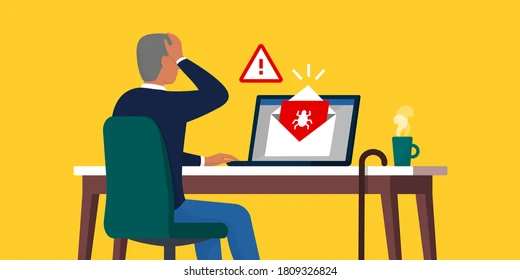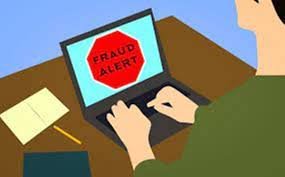Charity frauds
Charity fraud is the practice of using deception to obtain funds from individuals who think they are donating to a charitable organization. A person or group of people would frequently approach potential donors for donations to a charity that doesn’t exist by making outward declarations that they are a charity or a part of one. False charities are just one example of charity fraud, which also involves dishonest business practices such as not using the funds for what they were intended for.
Fraudulent schemes involving charities ask for donations for organizations that do little to no good; instead, the money goes to the individual who created the phony group.
These frauds can occur at any time, but they are more common after well-publicized tragedies. Criminals frequently take advantage of those who want to help you after catastrophes.
You may encounter charity fraud schemes in a variety of ways, including emails, social media posts, crowdfunding websites, cold calls, etc. When considering a donation to a charitable cause, use prudence and conduct your homework.
Untrustworthy contractors and other con artists may commit insurance fraud after a natural catastrophe or other events, re-victimizing people whose homes or businesses have been devastated. These con artists occasionally claim to be connected to the government when they are not.
Charity fraudsters employ deception to take money from donors who think they are supporting worthy projects. They steal funds from those who are in need and use them to fund their own lifestyles. Natural disasters and other calamities are frequently used by con artists as an opportunity to prey on donors’ compassion and exploit their generosity.
How to protect from charity frauds or scams
- Don’t evaluate a charity entirely based on its catchy name. Numerous groups have names that resemble those of well-known charities and organizations. Know the source of any money requests.
- Avoid emotional solicitations, and be skeptical of groups who have only hazy ideas for using the donations.
- Find out the reason for the charity or organization’s request for funds. What objective will be achieved? Ask inquiries, but hold off on giving until you have received satisfactory answers.
- Some solicitors employ pressure techniques, and they can even propose sending a “runner” to collect your money. Reputable charity won’t pressurize you into giving.
- Never hand over cash. Make checks payable to the organization when making a contribution.
- Look for indications that the website is secure, such as a “https:” in the website address, if you decide to make a donation online. A secure word begins with the letter “s.”
- The price of fundraising is increased by the thank-you presents. You can omit the gifts and make a direct donation to a charity. So, a higher portion of your donation will go toward the charity’s programmes.
- Be wary of organizations or people who conduct door-to-door, mail-in, or telephone solicitations. People who solicit on street corners are another category to be on the lookout for. Little is known about their charity or charitable aim, despite the fact that they solicit charitable donations.
- Be aware that paid solicitors, not volunteers, frequently make telephone fund-raising solicitations. The solicitors frequently represent a for-profit company that the charitable organization has hired. Telemarketing is pricey and could result in high fundraising expenses.
- There are 900 phone numbers for some businesses. The cost of the call is immediately charged to your phone when you dial the number. Make sure you want to contribute the call’s cost (which could be pricey) to that specific cause before you dial.
- The elderly are frequently victimized due to their fragility. Consumers who are elderly are urged to talk with a reliable relative or friend about giving to charity.
- The Charity Commission only registers legitimate charities.
- People who are soliciting donations for a legitimate charity must carry identification from the organization attesting to their right to do so.
- Call the charity immediately if the collection is for a nonprofit organization that you are confident is legitimate.
- Beware of misspelled words in emails and other written materials, especially collecting envelopes.
- To make sure your money reaches the correct individuals, send it directly to the charity.
- Make donations or offer assistance directly to charitable organizations.
- Look up the organization using its name. Make sure the website’s address matches what you searched for by checking.
- Never pay money to someone you don’t know or trust, or provide personal information, credit card information, or online account information to them.
- If a street vendor approaches you, request to see their identification. If you have any doubts about their identification, don’t pay.
- Ask the collector for information regarding the charity, such as its full name, address, and how the funds will be utilized, if you are approached in person. Close the door if they get combative and are unable to respond to your queries.
- Do not sign the contract if a stranger demands upfront payment in the form of a money order, wire transfer, international funds transfer, pre-loaded card, or virtual currency like Bitcoin. It is rare for money sent in this way to be recovered.
How charity scam works
- False charities aim to profit from your kindness and concern for needy people. Scammers will take your money by posing as an established company. These frauds not only cost you money, but they also take money from legitimate charities and causes that really need it.
- All throughout the year, fake charity initiatives take the guise of a response to actual catastrophes or disasters, like floods, cyclones, earthquakes, and bushfires.
- Scammers will assume the identity of either representatives of real, well-known charities or make up their own charity name. This can include organizations that serve patients and their families or carry out medical research. They might also pretend to be people who require funds for their health or for other causes.
How to spot charity frauds
- The charity organization is not registered – Scammers are profiting from concern over the coronavirus. They create websites to sell fraudulent goods and trick you into parting with your money and personal information by sending you phony emails, messages, and social media posts.
- They only have a social media presence – A strong social media presence can improve a business’s visibility and promote various charitable events. However, websites, open lines of communication, email addresses, or other methods of getting in touch with a representative are necessary even for nonprofit groups with modest funding. Be cautious of newly established charitable groups that appear in the wake of significant calamities like floods, cyclones, earthquakes, and bushfires. Sadly, they frequently serve as a front for scammers.
- You’re pressured to donate a certain amount – This is the most obvious reason to be cautious and should be taken seriously. Scammers frequently attempt to emotionally persuade you by aggressively publicizing the stories of their victims.
Anytime, regardless of the amount you can provide, legitimate charity accepts donations. Never feel compelled to make a donation.
- You can only donate through gift cards or wire transfers – The days of soliciting money from neighbors are long gone. Today, many payment processors collaborate with nonprofits. However, pay an alert if there are few payment choices available.
You should be aware of one thing regarding gift cards and wire transfers. These techniques are more difficult to track. Scammers favor them because of this.
- You receive unsolicited links – You have every right to be a little dubious if you receive fundraising messages with links through email or social media direct messages.
Authentic charities typically have a separate page with clear instructions on where and how to donate. While many individuals utilize crowdfunding websites for good causes, scammers can also take advantage of those platforms. By using a reverse image search, you can confirm crowdfunding campaigns. Scammers typically create heartbreaking tales using stock images and reports from news websites.
- You’re asked for personal information to donate – Online giving ought to be treated the same as online shopping. This means that you ought to have the choice of using a payment processor like PayPal for Charities Aid Foundation checkbooks or just entering your credit card information.
Don’t enter your personal information, especially on HTTP pages that aren’t secure. This is a major red flag and a typical identity theft tactic.
- There are misspellings in the URL – Spelling errors are typically indicative of a phishing scheme.
Scammers occasionally attempt to pass as trustworthy charities by copying their websites. However, they are unable to duplicate the web address, so they use a very similar one.
Therefore, before making a donation, double-check all the information.
Consider picking a different charity if you notice any warning signs or are unsure of how a charity will use your money.
Examples
- On April 20, 1918, an article about a charity scam perpetrated by George W. Ryder, the secretary of the Cripples’ Welfare Society, appeared in The New York Times. Ryder admitted to utilizing the donations for his own gain by engaging in mail fraud.
- The New York Times published an article about bogus fundraising requests on November 13, 1992. Frequently, a collection is taken for a charity or for those in need next to the cash register in stores. There are a few dishonest store owners among the many that properly give their extra change to the designated charity. The sellers were keeping the spare coins in this particular instance. According to the article, the merchants received $2 for each month’s fee to use the charity’s name.
- The FBI Tampa Bay office issued a warning following Hurricane Ian in the United States in 2022, stating that charity fraud con artists were active and knocking on doors and making phone calls.
Frequently Asked Questions
You can search online for a nonprofit’s Form 990 at: https://projects.propublica.org/nonprofits/ Contact the nonprofit company and ask if they can mail you a copy. Request it from the IRS.
If you suspect illicit behavior, call the police, or Action Fraud to report fraud or cybercrime. Are you criticizing a charity’s management style or any of its endeavors besides fundraising?




